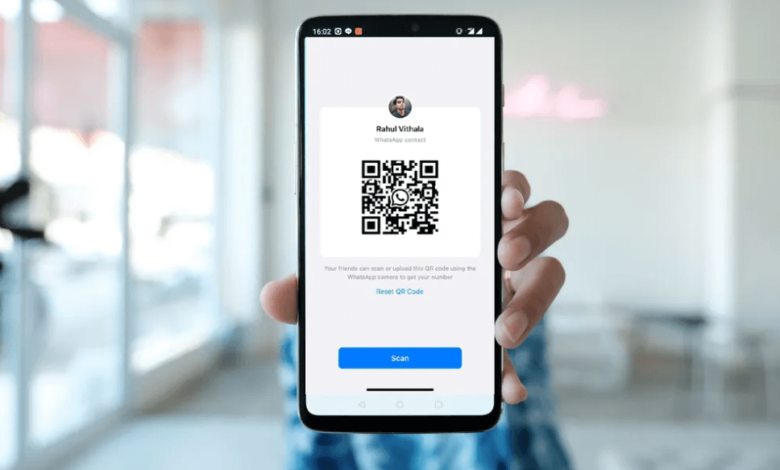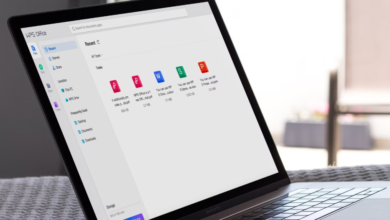The Technology Behind WhatsApp Web’s QR Code Login

In today’s technology-advanced and information-driven world, it’s no longer a luxury to be able to log in from our smartphones and tablets to our computers it’s actually required. Whatsapp Web has emerged as one of the must-have apps for millions of users by allowing them to send and receive text messages from their desktop browsers. But, have you ever thought about the beautiful tech behind it? The entire registration process is based on a fairly straightforward, yet beautifully secure system: the QR code. It’s more than just some barcode. It’s one of those cases where modern cryptography meets web-technology at its most complex and aesthetically pleasing.
The Magic of the QR Code – More Than You Think
For most people it seems a simple process: Open the Masuk WhatsApp Web page on your computer, open WhatsApp on your smartphone, tap “Linked Devices, ” and scan the QR code on the right side of the screen. That’s it. In just a few seconds your entire chat history will display with you on the larger screen. The key: For the hacker in you, the QR code is the key. As opposed to a password that someone writes down every time they log in, the QR code is only valid for a single session. When your browser loads the WhatsApp Web page, it isn’t just an image. It is immediately installing a secure, persistent connection with WhatsApp servers and waiting for its authorization. The QR code displayed shows the physical reality of a unique, encrypted key. It identifies your browser session so you can use it.
A Handshake, Not a Password: How the Connection is Forged
The other important fact you’ll learn here is that your password never travels to your computer when you use the Web version of WhatsApp. That’s what makes this system so secure. When you scan the code with your phone, the WhatsApp app on your mobile device decodes the information tucked inside the QR code: This includes a unique token and a public key. Once it thunks this info through, your phone uses it to send a message back to the server essentially saying “I, the authenticated phone, hereby assert that this particular browser session is authorized to access my account. ” This turns the QR code into a secure encrypted tunnel that provides a secure, encrypted link between your phone, the WhatsApp Web client on your browser, and the central servers.
See also: AI Face Swap Technology for Corporate Training Videos
The Role of End-to-End Encryption in the Background
Security is a top priority for WhatsApp and that goes even further on the WhatsApp Web platform. The end-to-end encryption that secures your messages on your mobile device is fully maintained on the desktop; the secrets that enable you to encrypt and decrypt your messages never leave your mobile device; neither are they stored on WhatsApp’s servers nor on your computer’s browser. On the very first login to the WhatsApp Web, your phone acts like the hub of the encryption/decryption process; it relays encrypted messages to the browser, which in turn simply displays them. So even if someone had access to your computer, they would not be able to read your message history unless those keys were held inside your phone.
Why a QR Code? The Benefits of This Method
For several reasons. One first is that it’s terrible. There are no long passwords that you have to type on a keyboard on a desktop PC, and so you can’t make a mistake or fail to login. Second is it’s absolutely secure. The uniqueness of the code also makes it impossible for a hacker to replay the code and access the same data. Third is that it leverages the security of your core device your phone which is probably already protected by a biometric lock or passcode, so multiple factors of authentication (something you have your phone and something you are/know the unlock method for your phone) are basically integrated into the flow.
Behind the Scenes: Maintaining the Connection
After you’ve established the secure connection (by logging in to the WhatsApp Web page), your browser and phone continue to send and receive silent communications through WhatsApp’s servers. Your phone doesn’t need to be on the same Wi-Fi network as you, but it does need to be connected to the Internet (cellular or Wi-Fi). If you close your browser or turn it off, or else put it to sleep, the connection isn’t immediately severed; and each time you open the WhatsApp Web page, it will often automatically reconnect (as long as the phone is still online and the session is valid in the server’s memory). This stubbornness is why you don’t have to scan the QR code every single time.
A Symphony of Security and Simplicity
The technology behind the Web login that WhatsApp uses is really a great solution to a complicated problem. It addresses two distinct challenges at once, which is why we often struggle to integrate both high security and user-friendliness together. In its development it has been able to use a self-generated QR code as a secure token, using the phone itself to be an authentication authority, and having end-to-end encryption throughout. The next time you scan that pixelated square to begin your WhatsApp Web session, you can appreciate the intricate and powerful technology working behind the scenes to keep you connected and secure.



